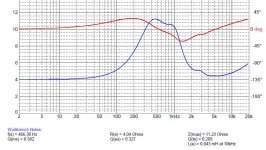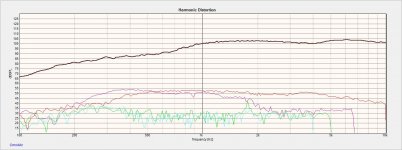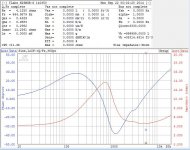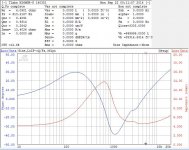Anyone know if Transducer Lab is still in business? Mail does not seem to work and e-speakers and Meniscus are both sold out. Their ceramic dome looks very interesting.
Solen has two tweeters in stock
Ah. super! About right timing. The joys of a small business.
They should put some updates on their WEB. It makes them look like they aren't there.
One of the things I am proving again is that it is cheaper to use easy to use good drivers than trying to make so-so drivers behave. On paper at least, theirs look like they will be easy to use.
They should put some updates on their WEB. It makes them look like they aren't there.
One of the things I am proving again is that it is cheaper to use easy to use good drivers than trying to make so-so drivers behave. On paper at least, theirs look like they will be easy to use.
Per these posts, does this mean no one has any (or very much) experience with TL? I'm interested in the MgO (N26MGR-G). I'm hoping testing reveals these to be quick, clean and truthful (as in a "poor man's" Accuton). Thanks for any input; can someone point me to other posts discussing Transducer Labs tweeters?
I have a pair of MgO-GR. FWIW the response differences are very minimal between the AlO2, MgO-G, and BER.
Wolf
That's good to know. Next question for anybody out there. Anyone measure or have a link of testing; especially impulse/transient response? I'm thinking the MgO is probably better damped so I'm hoping for minimal overshoot, ringing, etc. as some other metal tweeters tend to do with very fast rise time signals.
Attachments
Last edited:
I see that other's test results are similar to mine. The frequency response in the advertised data is substantially different (>4dB) than the actual measured response. That's of course assuming the use a calibrated mic and an IEC baffle.
I'm not sure what the point of matching to +\1dB within a pair if the FR is quite different than what is being advertised. If one of the tweeters is damaged, one would need to buy another pair because it won't be possible to buy a matching tweeter.
I'm not sure what the point of matching to +\1dB within a pair if the FR is quite different than what is being advertised. If one of the tweeters is damaged, one would need to buy another pair because it won't be possible to buy a matching tweeter.
I see that other's test results are similar to mine. The frequency response in the advertised data is substantially different (>4dB) than the actual measured response. That's of course assuming the use a calibrated mic and an IEC baffle.
I'm not sure what the point of matching to +\1dB within a pair if the FR is quite different than what is being advertised. If one of the tweeters is damaged, one would need to buy another pair because it won't be possible to buy a matching tweeter.
Well, that doesn't necessarily speak to batch consistency issues- but yes, the published response should match the measured.
- Status
- This old topic is closed. If you want to reopen this topic, contact a moderator using the "Report Post" button.
- Home
- Loudspeakers
- Multi-Way
- Transducer Labs




